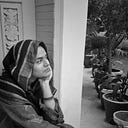Navigating the complex features of Exile; insights into the “reflections of exile” by Edward Saed.

Exile, the state of estrangement and alienation has been the topic of interest of artists including poets, writers and painters. Exile in both forms, voluntary and forced is the dislocation and displacement of an individual from his homeland. In the contemporary world of increasing existential crisis and identity questions along with individual freedom, exile is a very significant topic. It includes not only the physical displacement but rather the emotional and psychological alienation as well. Some people staying at their very homes randomly start feeling aliens, they no longer relate to their surroundings, the culture, religion, and morals. People in self exile advocate the state by stating it as a way to individualism and their personal identity with no bounds of any religion or culture.
Now a days, the number of people in exile is increasing in the search of better life opportunities, peace and independence. But each faces the consequences and miseries of exile as an undeniable gap and feeling of longing in their hearts.

Edward Saed, along with other modern philosophers has tackled the complex topic of exile and its impacts on identity, memory and creativity in his essay “reflections on exile”. Edward Saed, a Palestinian-American writer presents the features of exile from his personal experiences as he himself got displaced from his homeland, which he termed as “dispossession.”
Said’s analysis unveils the paradoxes and complexities of exile, from its potential for creative reimagining and cultural hybridity to its darker manifestations of isolation, and exclusion. Exile, to Edward Saed is a nuanced terrain where personal narratives intersect with broader historical forces, shaping the contours of human experience and identity. His discussion not only revolves around the negative aspects of exile but rather his reflections are inclusive of the possible goodness of exile in the form of learning. The key features, discussed by him are
- 1- Real-Life Experiences of Exile: John D. Barbour's analysis and Mahmoud Darwish's poetry offer poignant glimpses into real-life experiences of exile. Barbour's discussion of the Palestinian plight brings to light the political dimensions of exile, highlighting the injustices faced by displaced communities and the enduring struggle for recognition and justice. Darwish's evocative poetry delves into the emotional and existential aspects of exile, depicting themes of nostalgia, loss, and resilience in the face of adversity. His imagery captures the longing for a homeland, the pain of displacement, and the enduring human spirit that persists despite exile's challenges.
- 2- Comparative Perspectives on Exile: By comparing Said’s reflections with real-life narratives, we gain a nuanced understanding of exile’s universal themes. The Palestinian narrative, as discussed by Barbour, mirrors Said’s insights into the political and cultural ramifications of displacement, emphasizing the complexities of identity and belonging in exile. Darwish’s poetry adds a layer of emotional depth, illustrating the profound impact of exile on individual psyche and collective memory. Through these comparative perspectives, we discern common threads of resilience, cultural heritage, and the quest for justice that characterize diverse exile experiences.
- Psychological and Cultural Dimensions: Said's essay delves into the psychological turmoil of exile, exploring feelings of alienation, uprootedness, and the search for belonging. Darwish's poetry amplifies these emotional nuances, portraying exile as a deeply personal and collective experience marked by longing and nostalgia. Moreover, exile fosters a unique cultural and intellectual perspective, prompting critical reflections on identity, heritage, and the complexities of cultural hybridity. The interplay of psychological and cultural dimensions enriches our understanding of exile as a transformative and multifaceted phenomenon.
- Impacts of Exile on Identity: Said's exploration of exile delves into its profound impacts on individual and collective identity. He discusses how exile disrupts established notions of self and belonging, leading to a constant negotiation of identity in new and often hostile environments. This theme resonates with the experiences depicted in the materials provided, where individuals and communities grapple with the challenge of maintaining a cohesive sense of identity amid displacement and cultural upheaval.
- Cultural Hybridity and Adaptation: Exile often leads to cultural hybridity and adaptation as individuals navigate new cultural landscapes while preserving elements of their heritage. Said's discussions on cultural hybridity resonate with the experiences depicted in the materials, where exiled communities forge unique identities that blend aspects of their native culture with influences from their host environments. This process of adaptation and hybridization reflects the resilience and creativity born out of exile's challenges.

- Literary and Artistic Expressions: Exile often finds expression through literary and artistic mediums, serving as a powerful theme in literature, poetry, and visual arts. Darwish's evocative poetry exemplifies this, capturing the emotional depth and existential dilemmas of exile through vivid imagery and metaphor. Said's own literary works, including "Out of Place," contribute to this artistic exploration of exile, offering nuanced portrayals of displacement, identity, and belonging that resonate with diverse audiences.
Conclusion;
Edward Said’s "Reflections on Exile" offers a compelling framework for understanding not just the historical and political experience of exile, but its contemporary relevance. By moving beyond the fantasised notions of art creation, Said reveals the complex interplay of loss, critical distance, and creative potential that shapes the lives of exiles. His insights resonate with the experiences of countless individuals around the globe, reminding us of the enduring human struggle with displacement and the capacity for renewal that can emerge even from the most profound loss. Furthermore, by considering the Palestinian experience, we are reminded of the ongoing political realities of exile and the importance of critical historical engagement with narratives of displacement.
